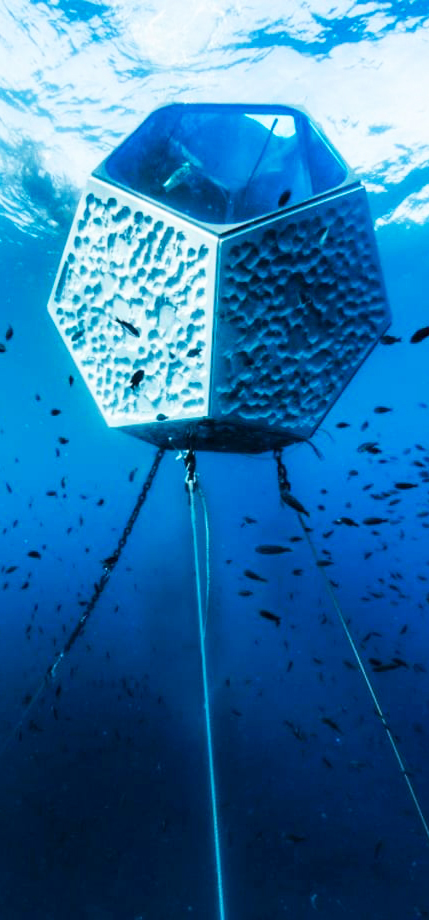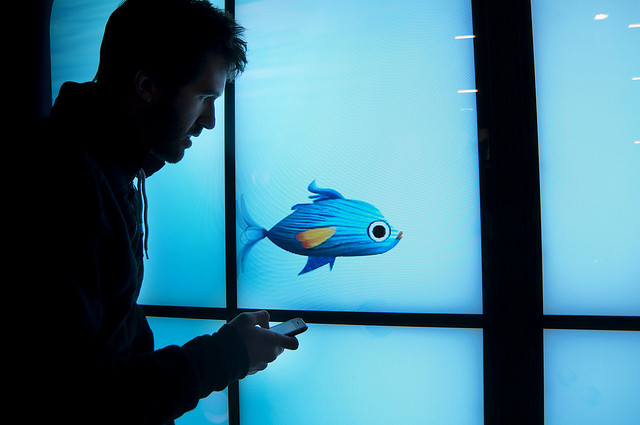
DOUG AITKEN
Underwater Pavilions
Underwater Pavilions is artist Doug Aitken’s large-scale installation produced by Parley for the Oceans and presented in partnership with The Museum of Contemporary Art, Los Angeles (MOCA). The work consists of three temporary underwater sculptures, floating beneath the ocean’s surface that swimmers, snorkelers, and scuba divers swim through and experience. Geometric in design, the sculptures create underwater spaces synthesizing art and science as they are constructed with carefully researched materials and will be moored to the ocean floor. Part of each structure is mirrored to reflect the underwater seascape and create a kaleidoscopic observatory for the viewer, while other surfaces are rough and rock-like. The environments created by the sculptures will constantly change with the currents and the time of day, focusing the attention of the viewer on the rhythm of the ocean and its life cycles.





